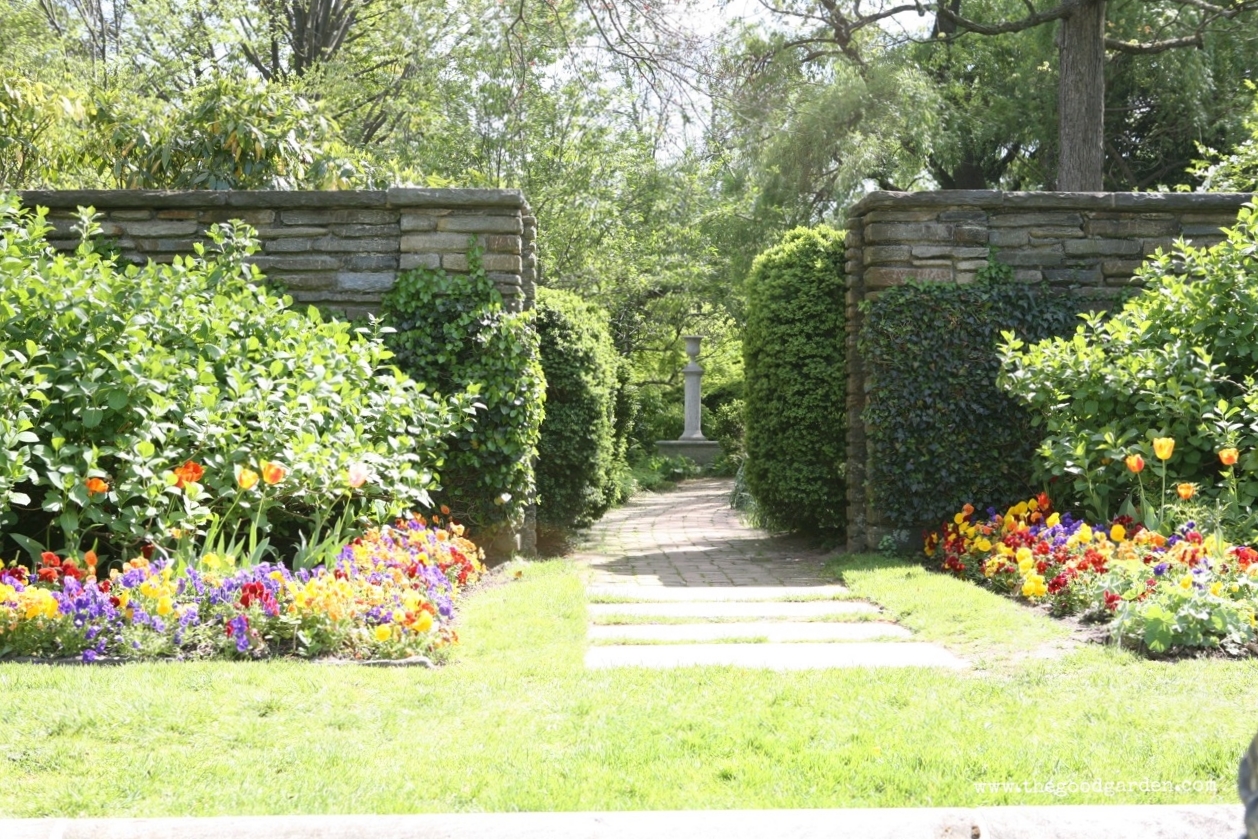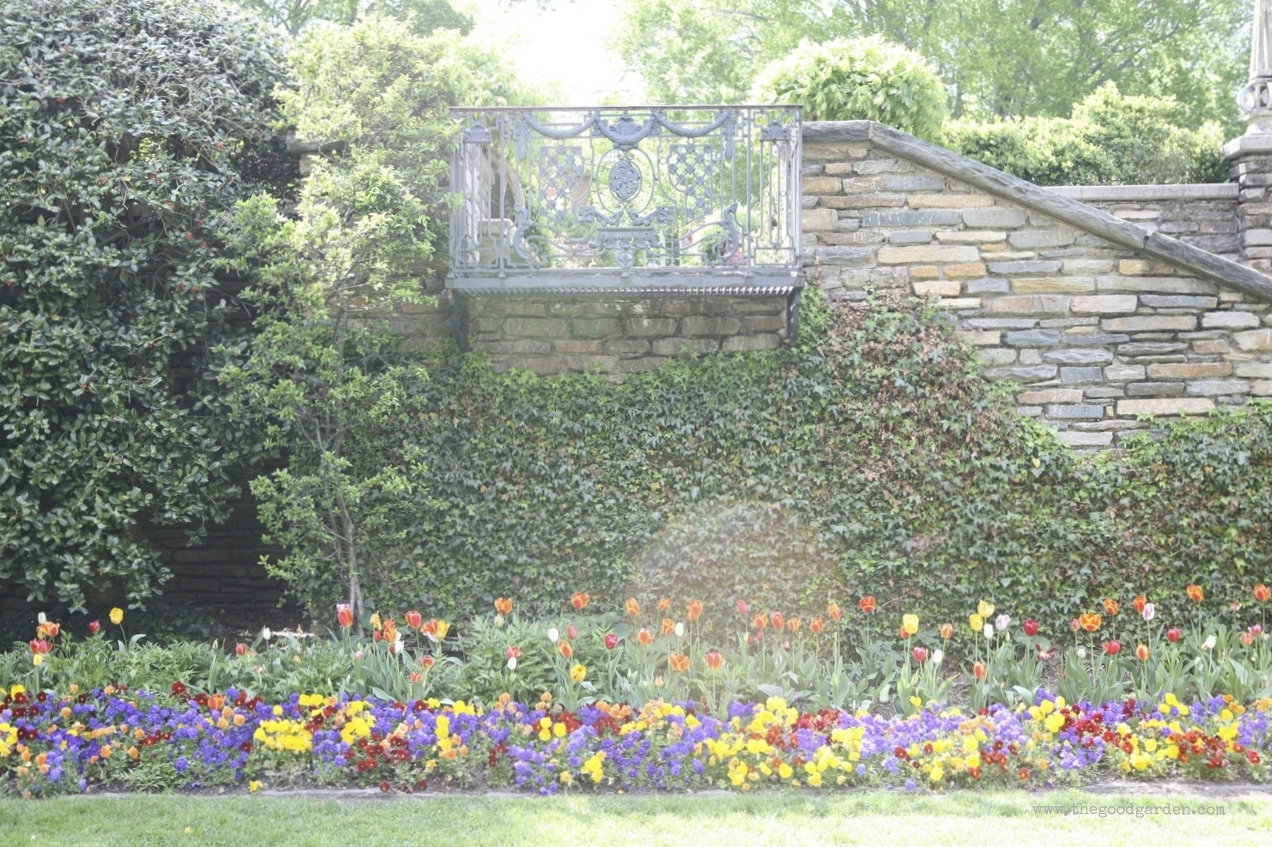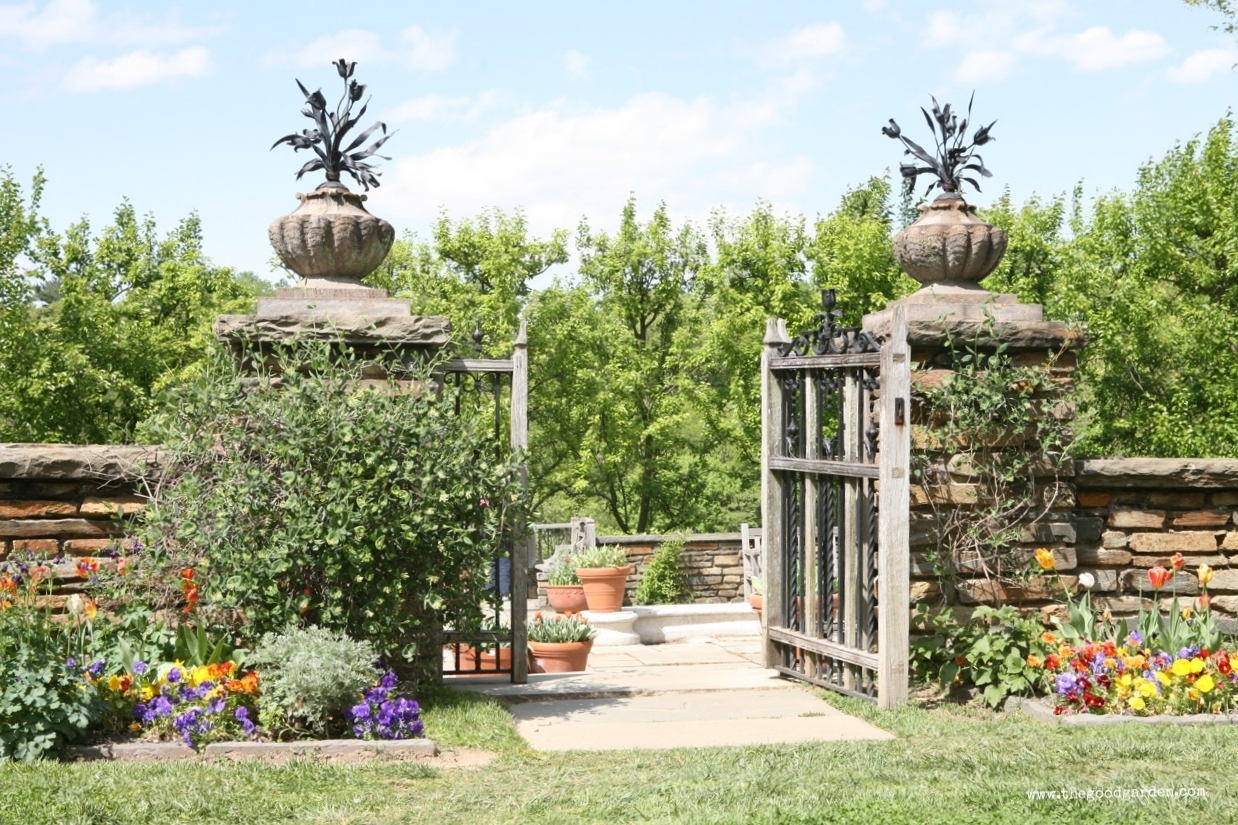“This terrace is the one real flower garden in the series of terraces sloping eastward from the main building. In the spring, probably the best bulbs to use will be Tulips, in such colors as may be found attractive. The cheapest groups which can be bought in large quantities are those of the mixed Darwins, preferably running toward the yellows, bronzes, and oranges, but if these colors prove difficult to find, the old-fashioned rainbow mixture of all sorts of colors can wisely be substituted. It should be insisted that the tulips be supplied of sorts approximately of even height, and all of late-blooming varieties, … as… early-flowering Tulips come and go before the rest of the plantations are in bloom, make decided blanks in the composition. Under the tulips… annuals such as Forget-me-not, Pansies, Daisies… may be set out.”
-- Beatrix Farrand, Plant Book for Dumbarton Oaks, 1941
The process of designing a garden is usually private, done by the garden designer alone or in intimate discussions with the owner. As a result we see the finished product, not the initial vision, issues, or trade-offs.
Front facade of Dumbarton Oaks comes into view after a curved drive.
Dumbarton Oaks, also known as the Oaks, is a house and garden created in the Georgetown section of Washington, DC in the arts and crafts style. It is a signature space that embodies the work of Beatrix Farrand. Farrand, one of the greatest American garden designers, was a founding member of the American Society of Landscape Architects. Her work was limited to private homes and private universities because only men had access to public projects.
We get a unique glimpse into the creation of this wonderful garden because so much of the process was captured and saved in correspondence between Farrand, client Mildred Bliss, and architect Lawrence White.
This garden was designed in letters because Bliss was living in Sweden and Argentina with her diplomat husband during the building process in the 1920‘s. Also, Farrand wrote Plant Book for Dumbarton Oaks in 1941 as a guide to help maintain the garden. In it she shares the rationale behind the design, the plant lists, and the maintenance instructions. Through both of these we can experience the thought process behind the garden, and get ideas for our own gardens.
Beatrix Farrand and Cubby, 1927
Beatrix Farrand Society Archives
Reading the letters today is like peering into a long savored conversation, with each party’s ideas well thought out and explained, and with long pauses in between for reflection.
I think that these letters are fascinating. For example, Farrand explains to Bliss how she sees her role as designer: ”What I shall try and do … is to simply be your gardening pair of hands, carrying out your ideas,” July 1922
On April 16, 1923, Bliss asks Farrand to collaborate with the architect: on “ After some deliberation we have decided it is the wisest solution… for you and the architect … to collaborate. As you will be here off and on during our absence and these buildings cannot be begun until next mid-winter it seems indispensable that the architect should have your assistance….”
Farrand’s approach was incredibly collaborative. In her June 1922 project report she wrote: “These notes should not be considered as more than suggestions and jottings, the result of only a few hours acquaintance with the Oaks and are subject to alteration and change of mind on the owners and designers part.” A few weeks later Farrand added, “I shall look for sharp criticism from you and shall equally tell you if your ideas do not seem to me likely to work well.”
It’s hard to imagine a professional as accomplished as Farrand using such a self-deprecating tone. If I had just an afternoon with Beatrix Farrand in my garden I would want to know her “suggestions and jottings.” I am sure they would be brilliant. A version of this post was originally posted in 2015.
Mildred Bliss, ca. 1927 Source: The Dumbarton Oaks Oral History Project







